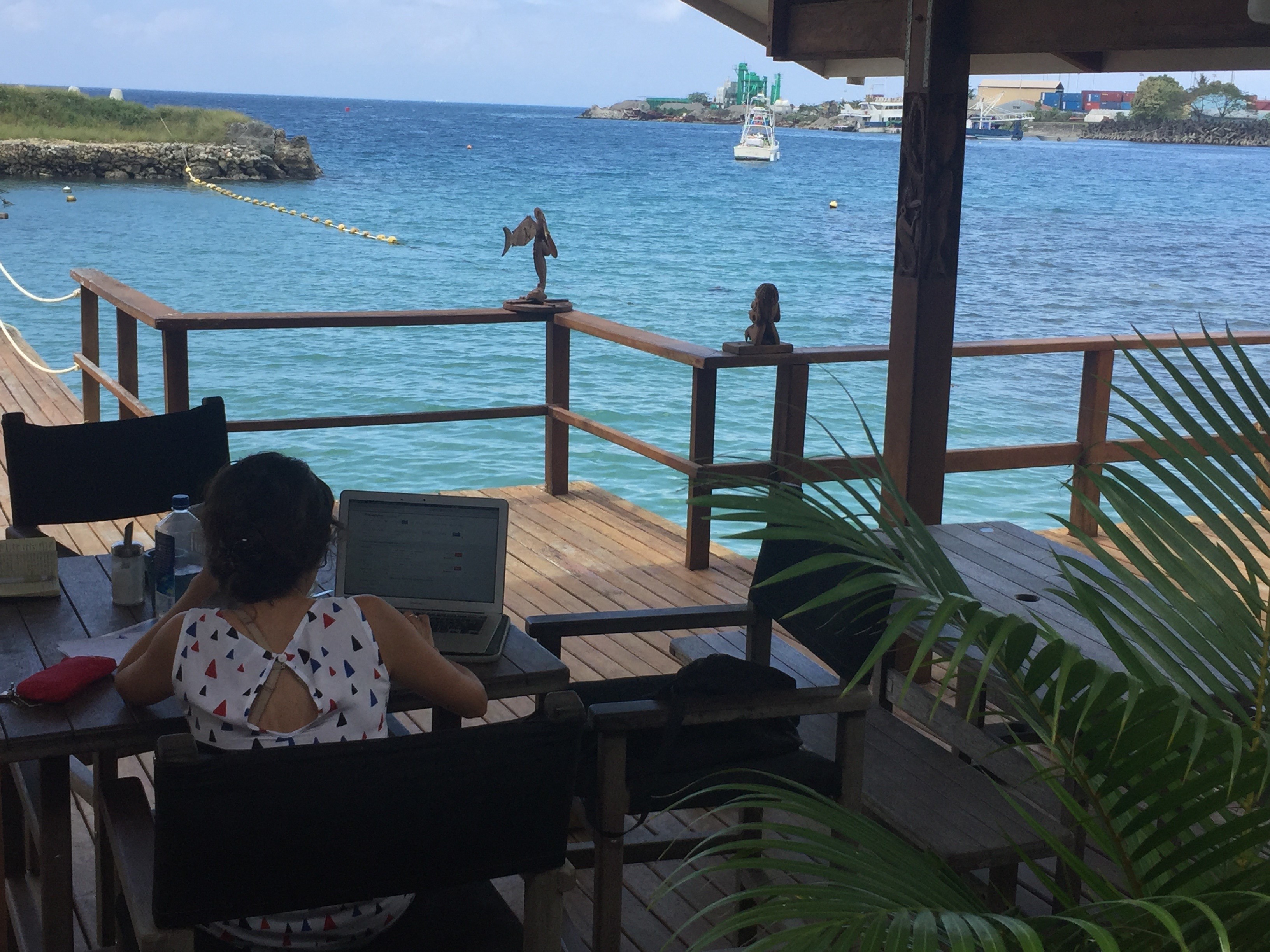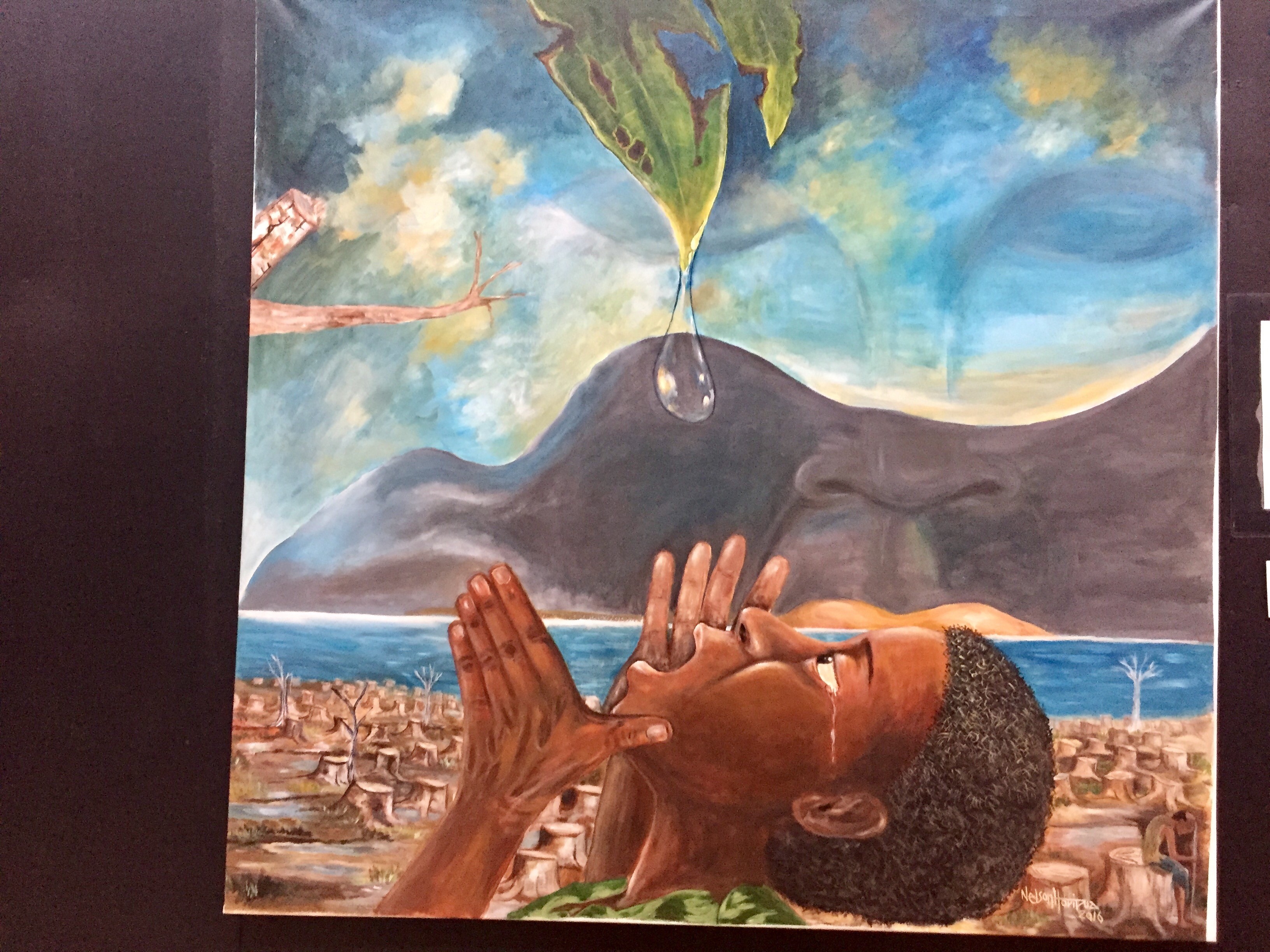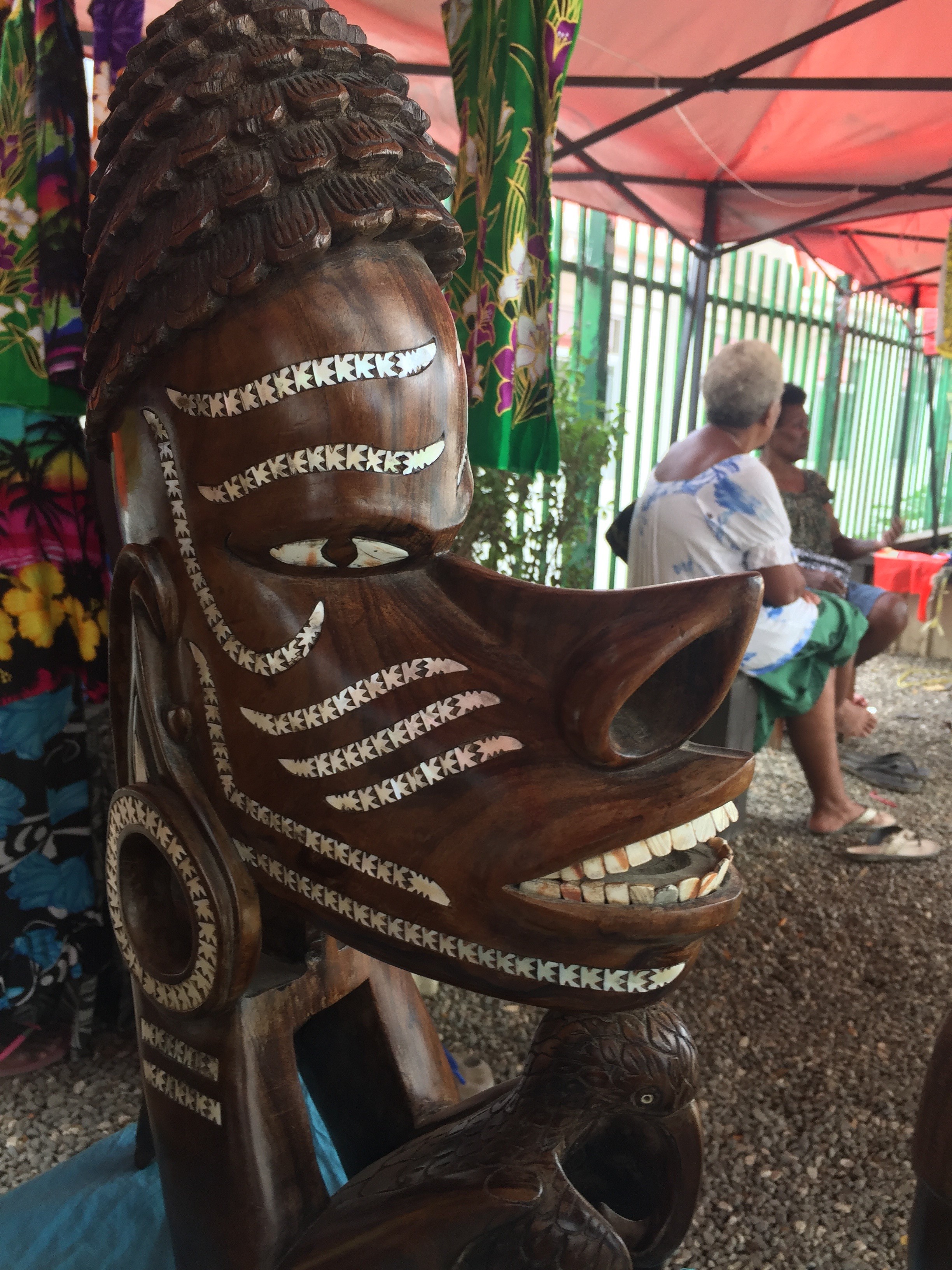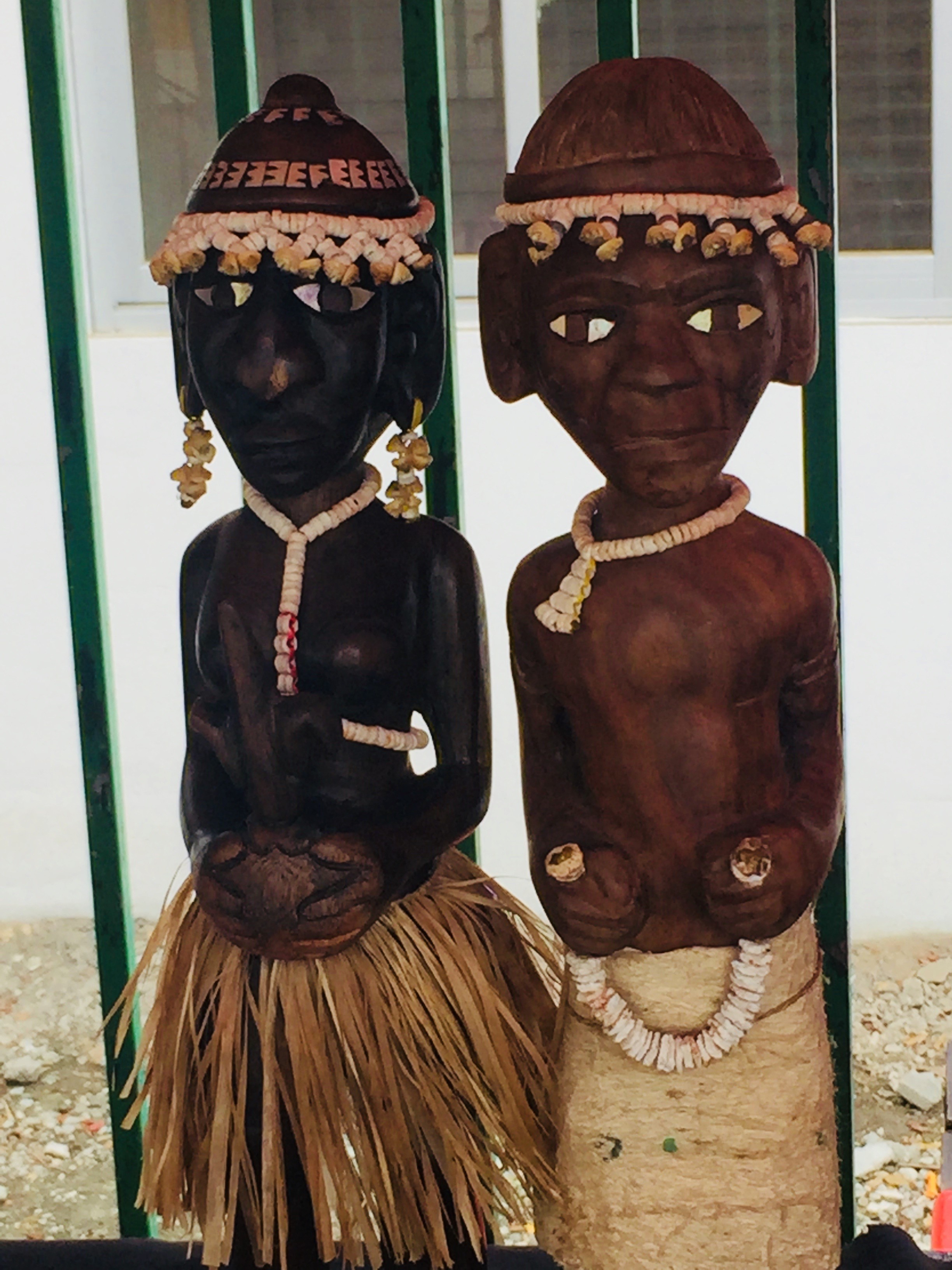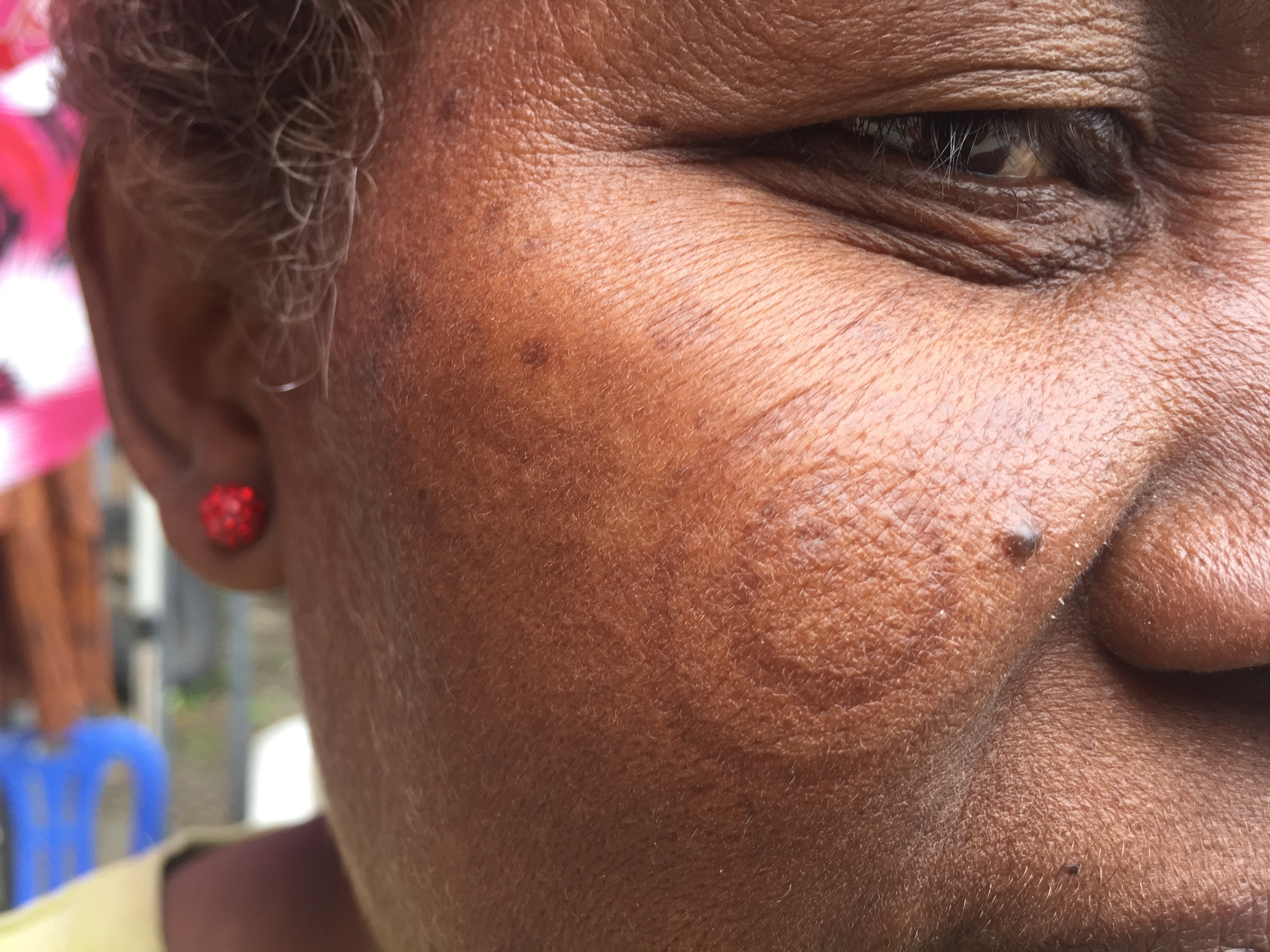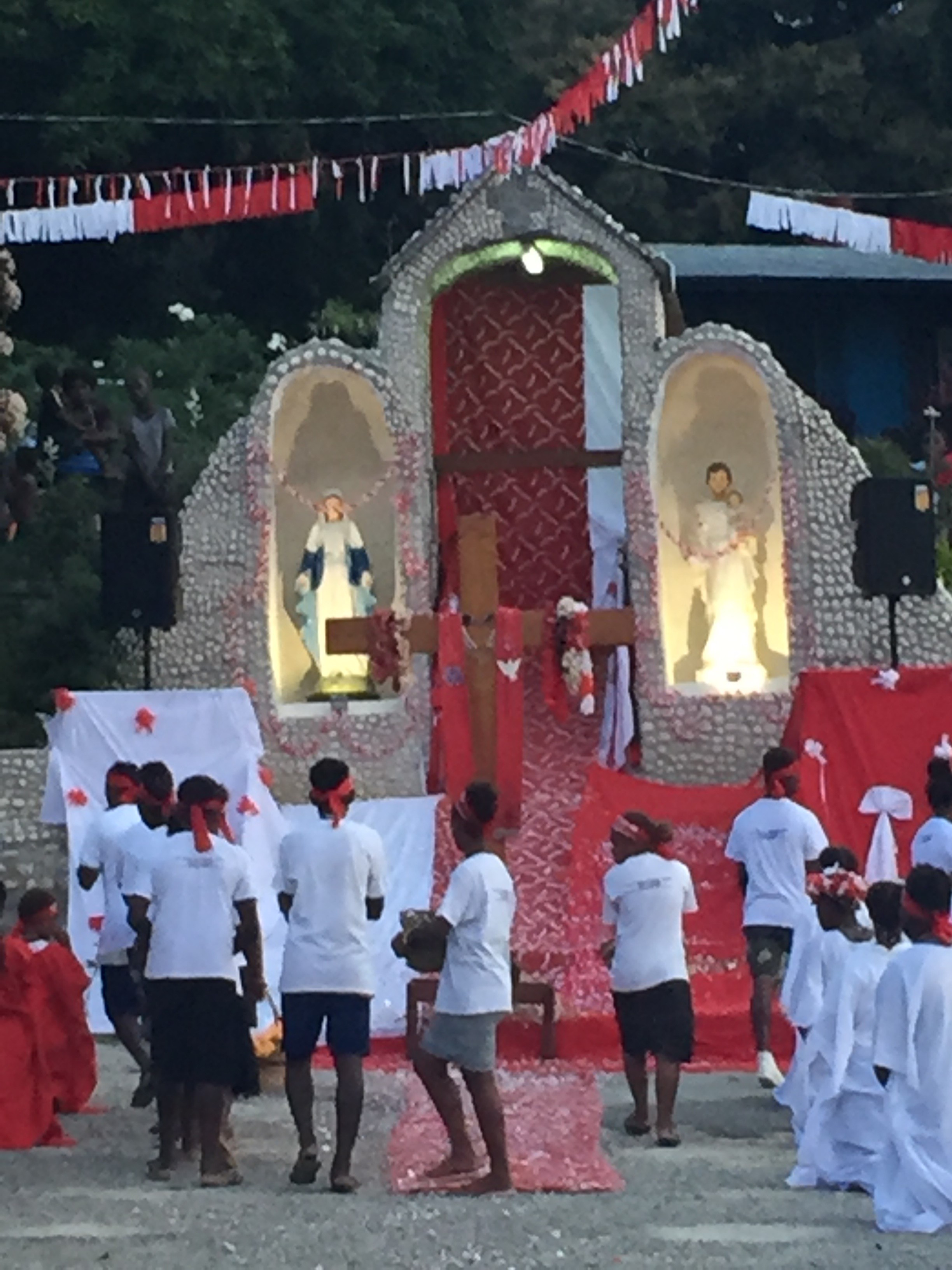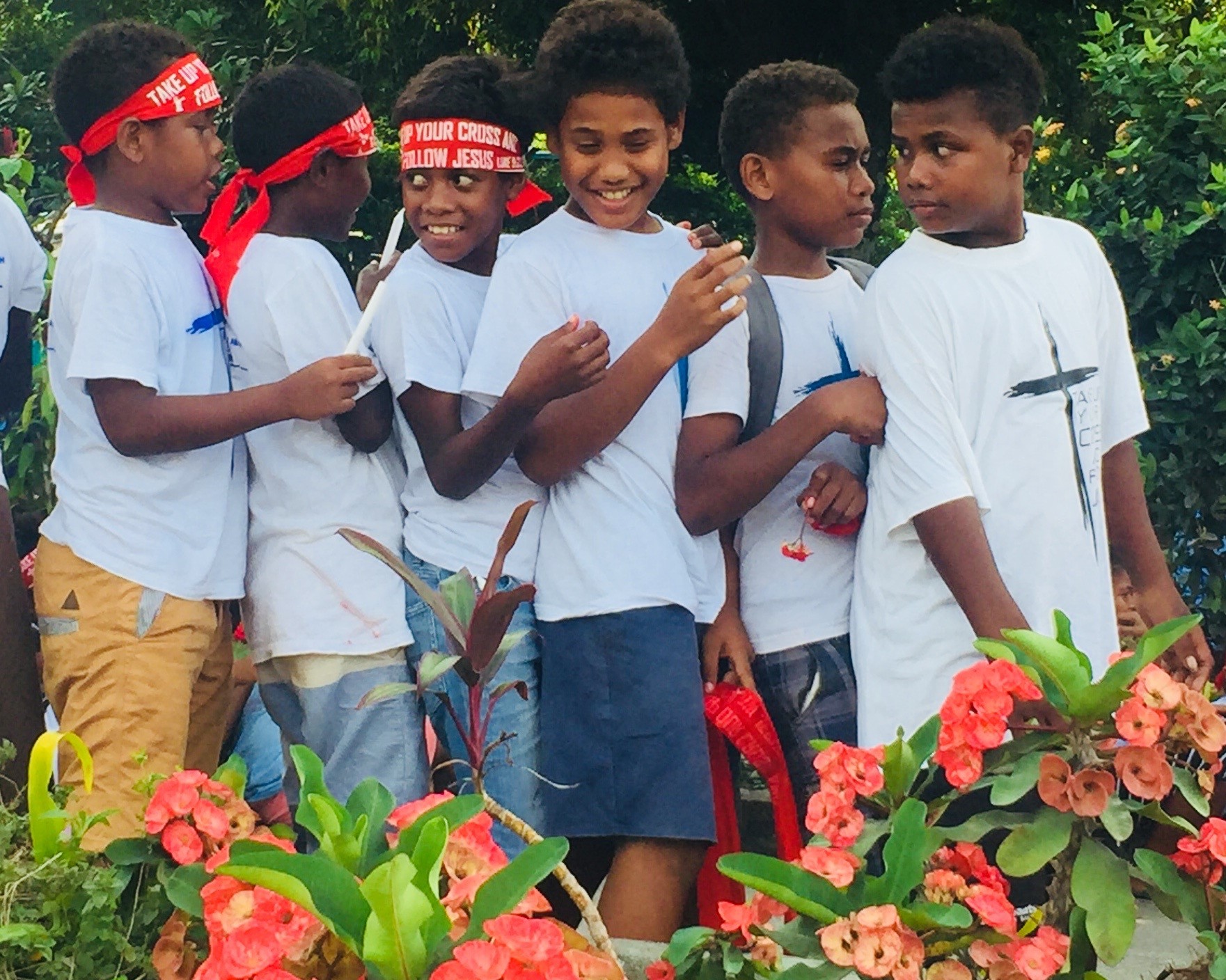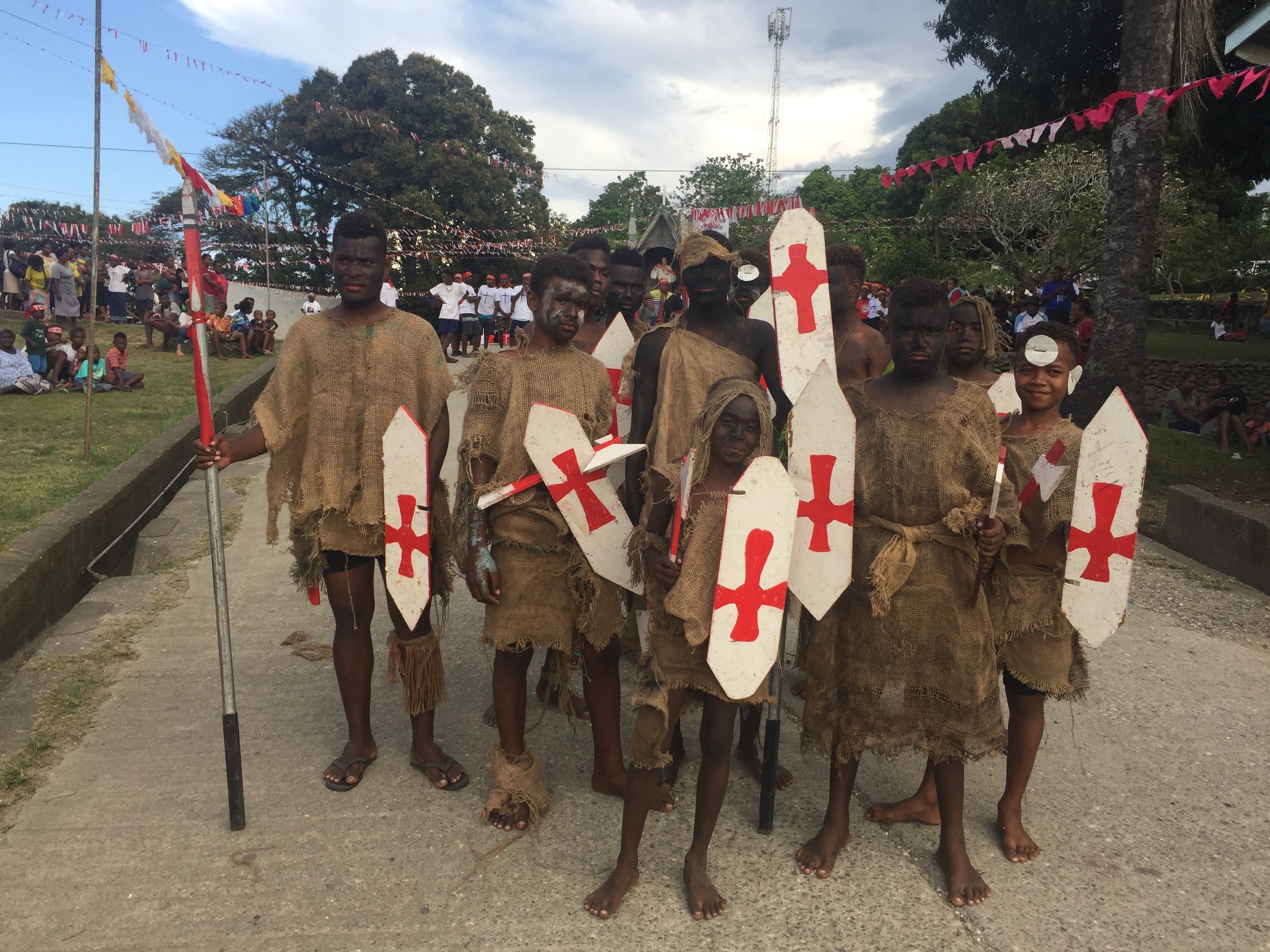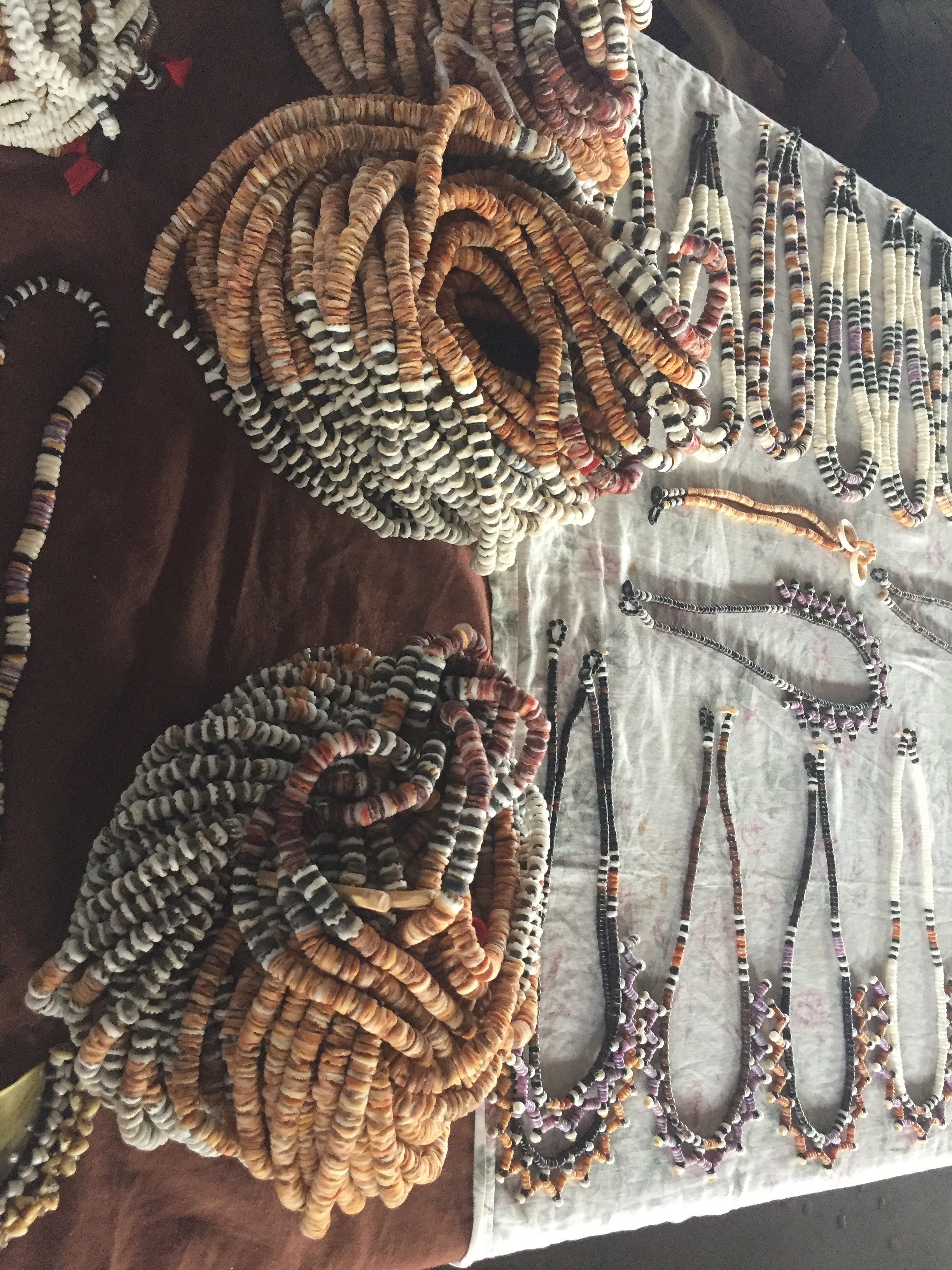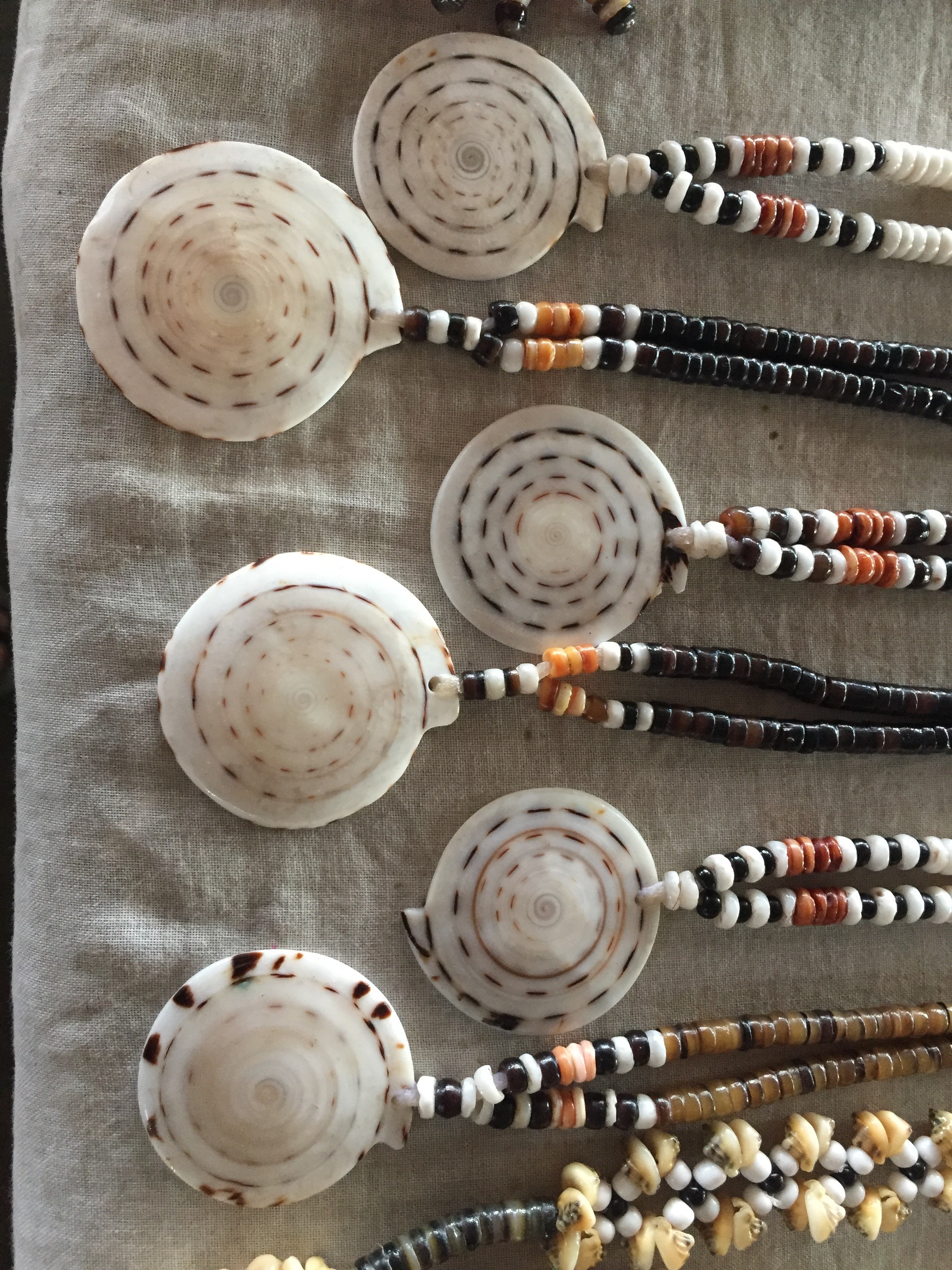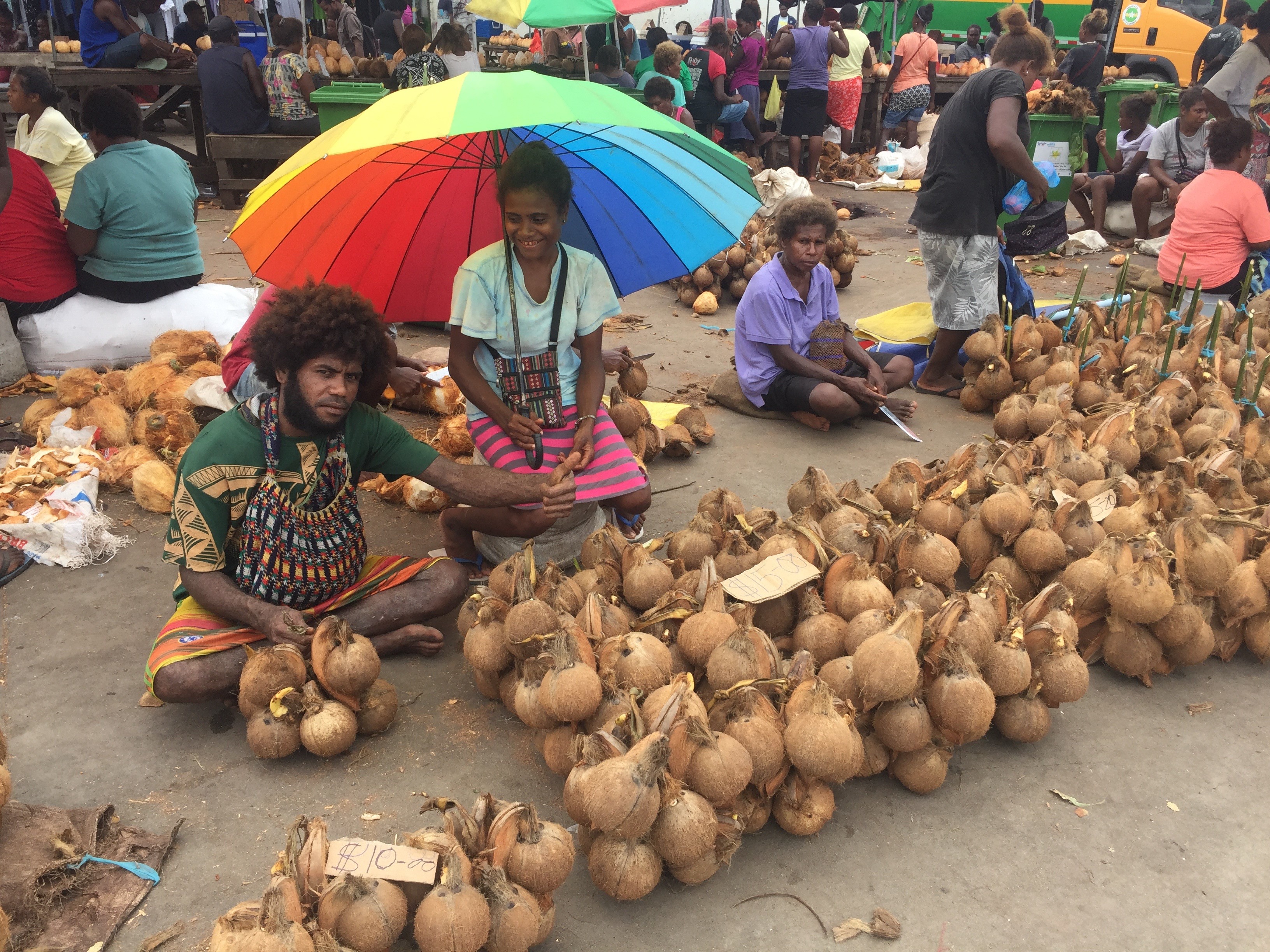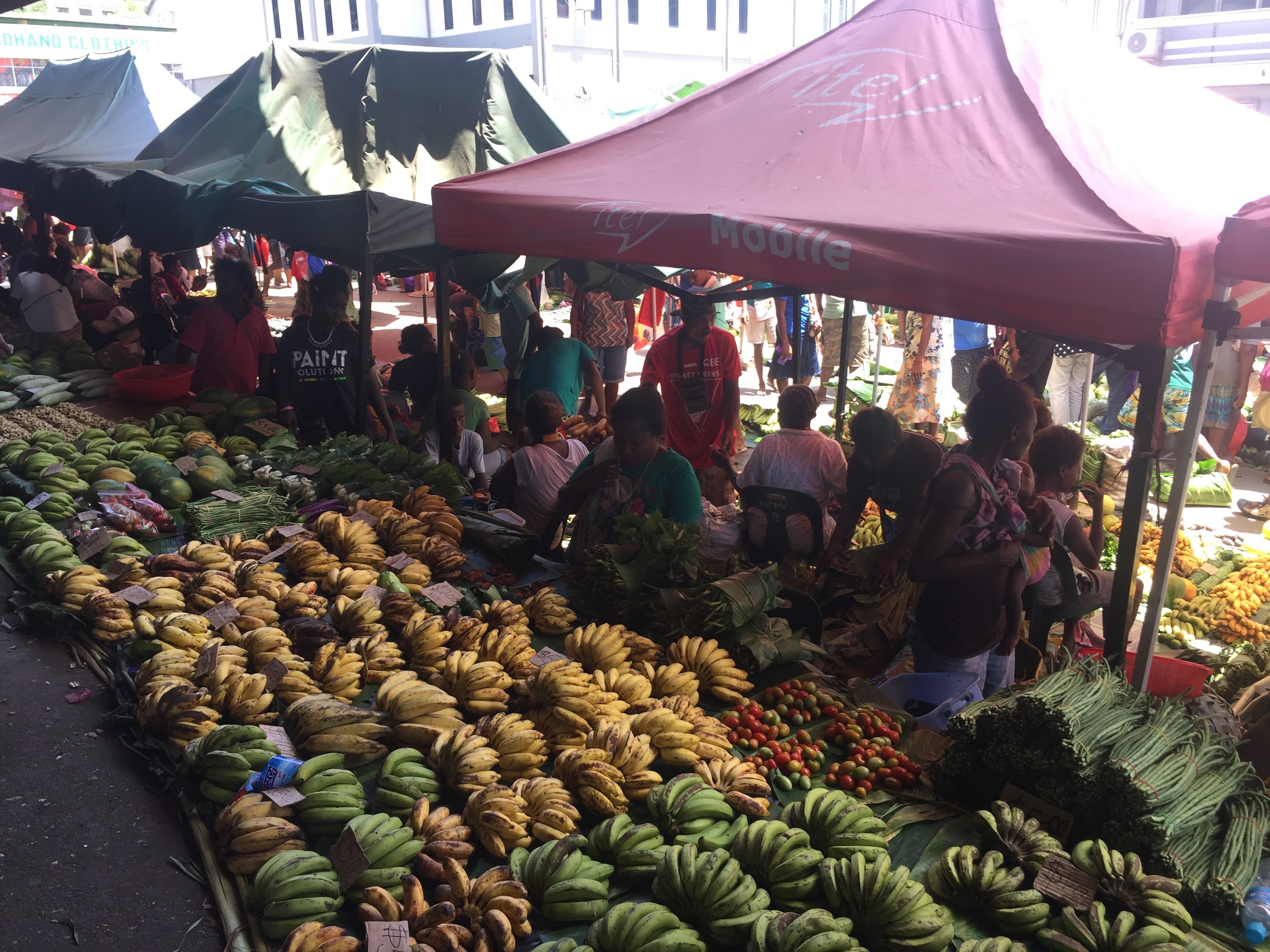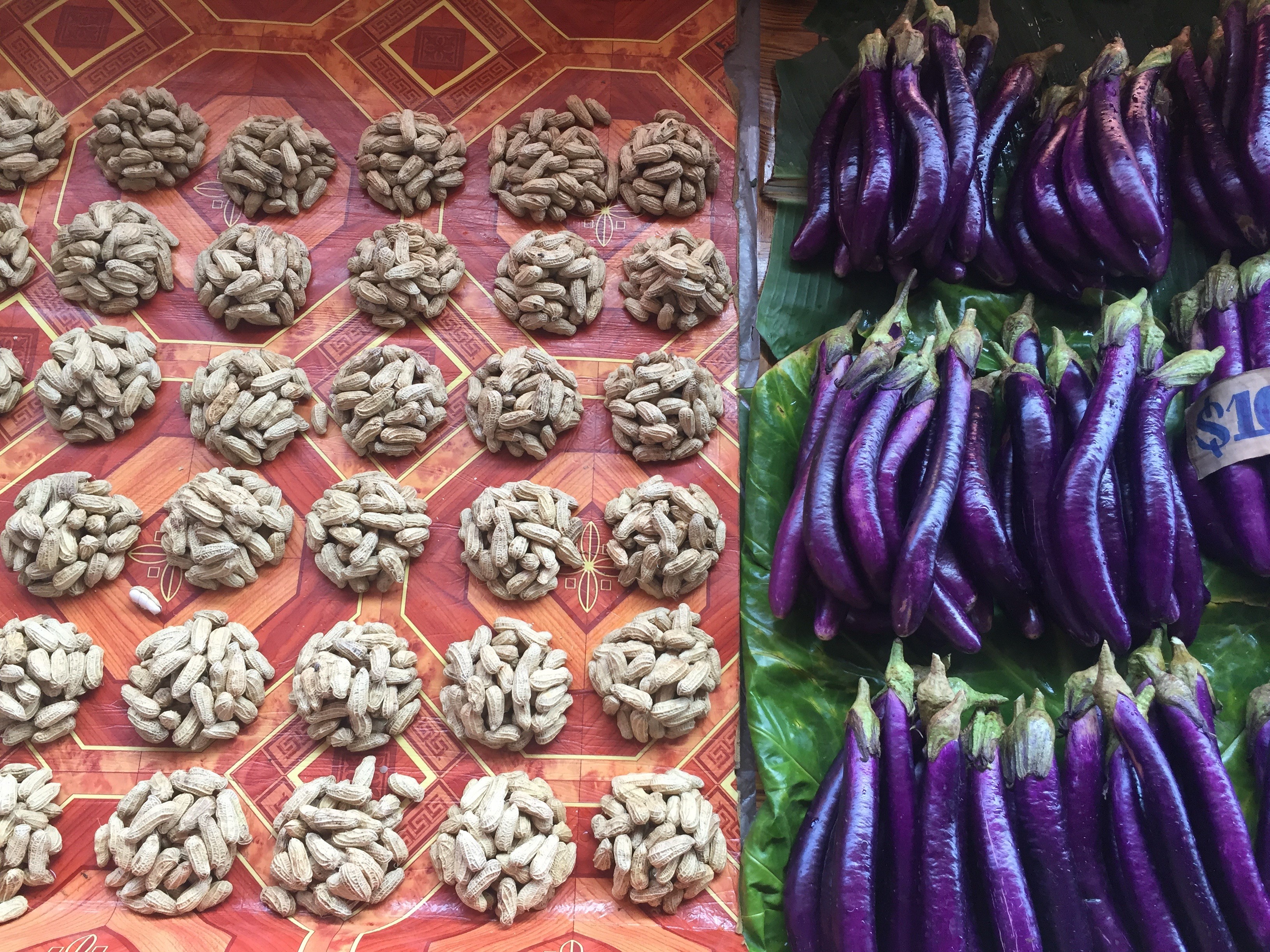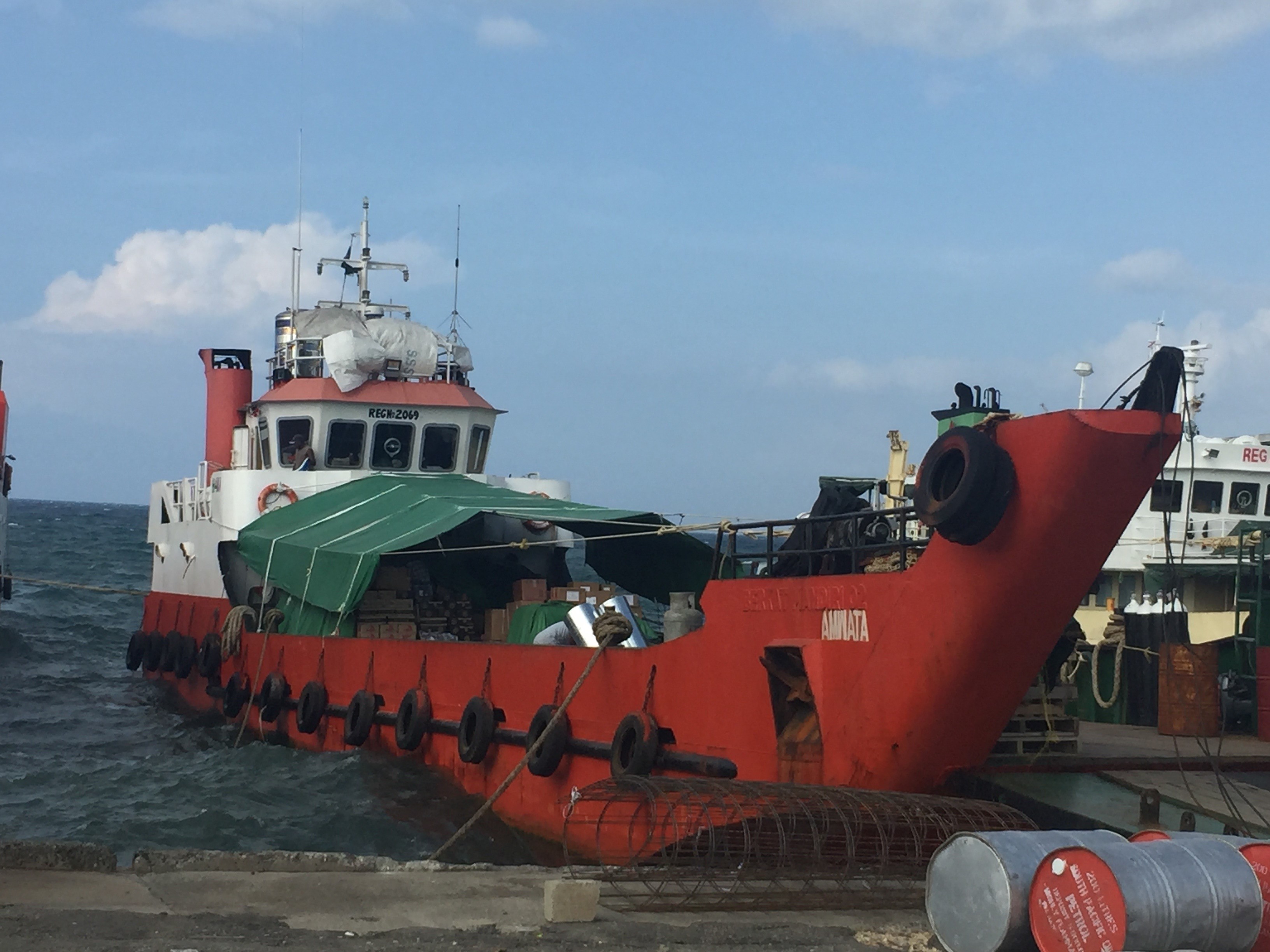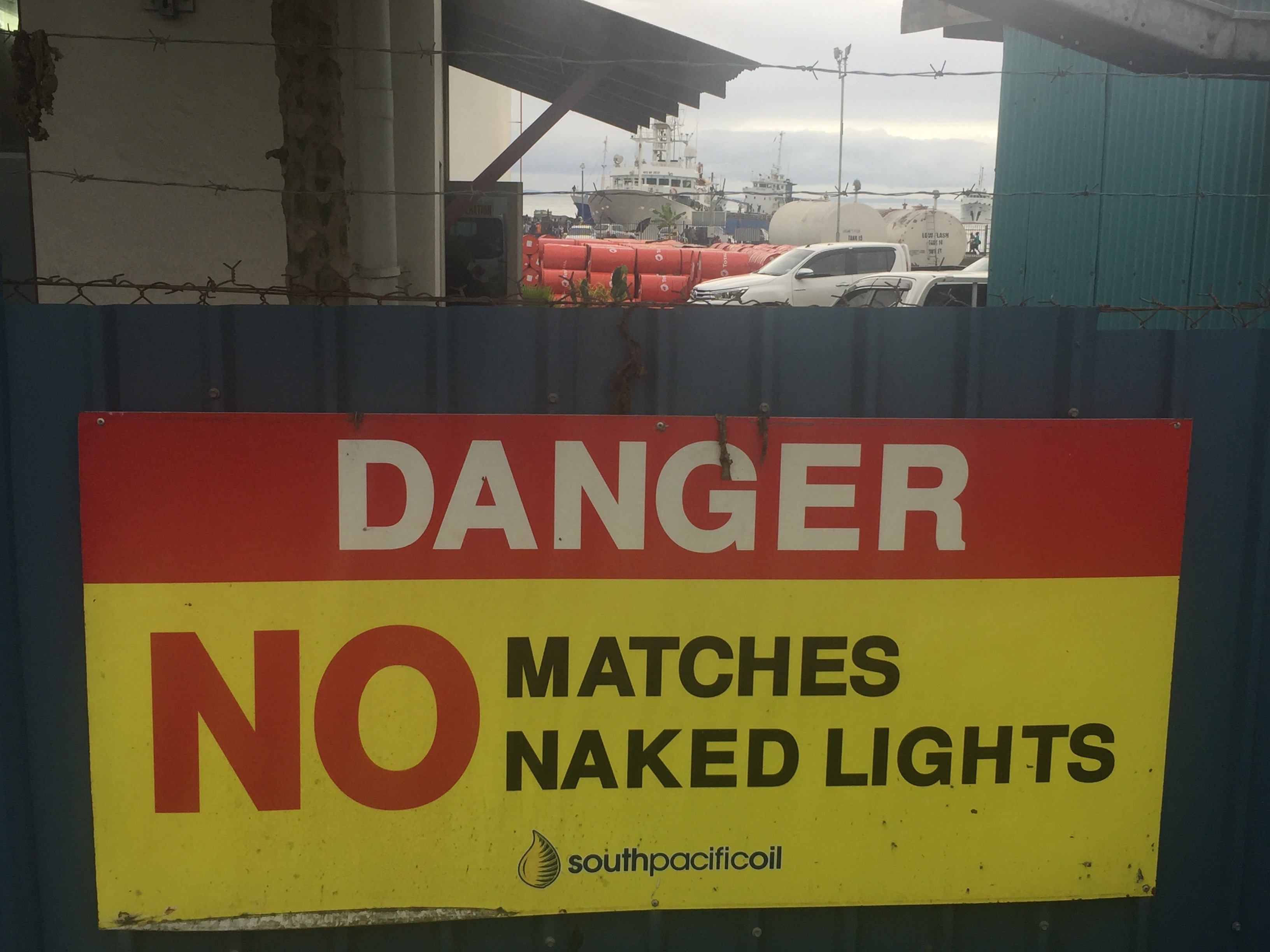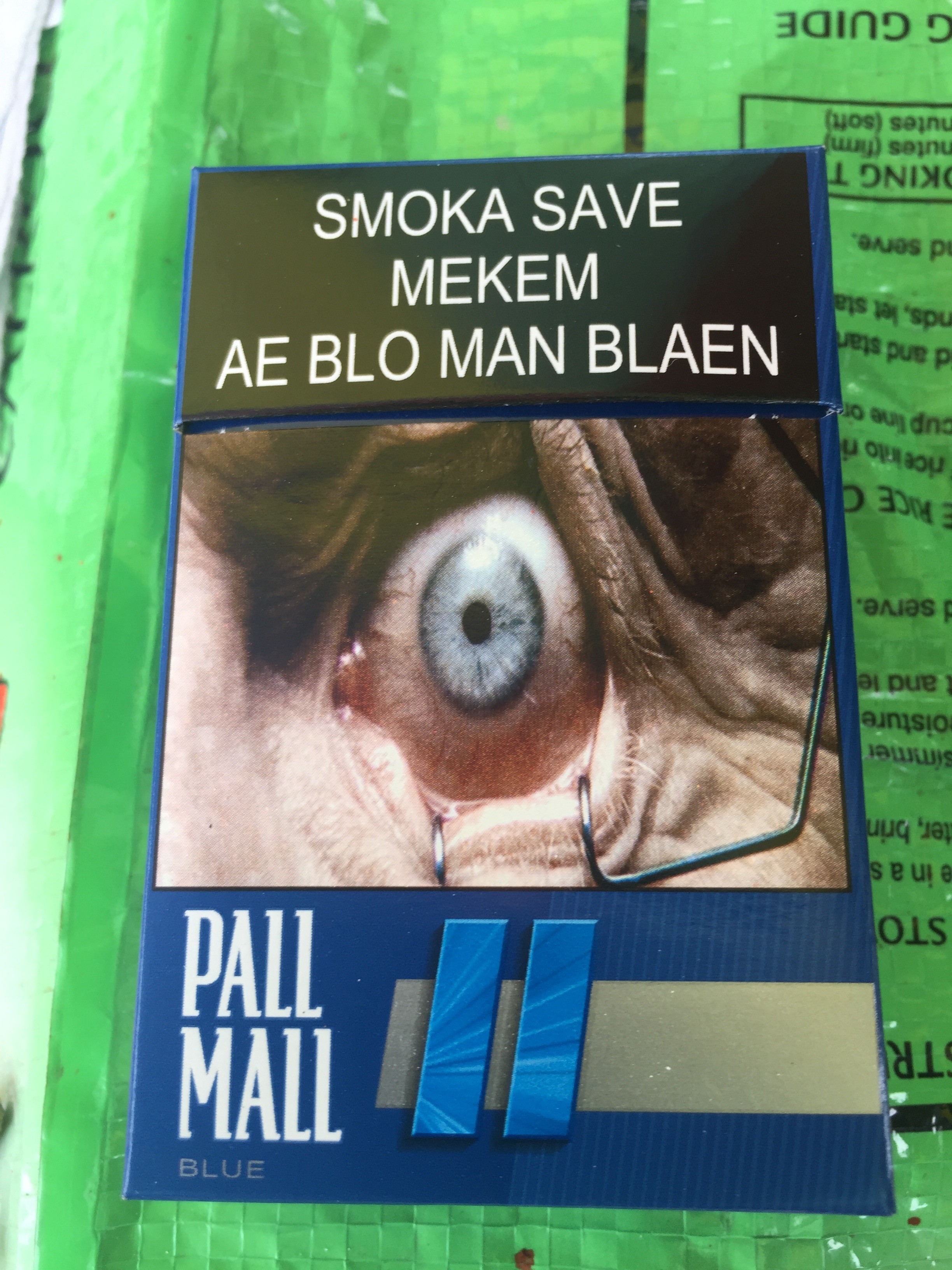Honiara, the town founded by Japanese forces when building Henderson airport during World War II in 1942, has also places of beauty and interest. One of these places is a coffeehouse located on the waterfront. Many expatriates visit it. The coffeehouse closes at 3 pm, which means that the entrance gate to the alley leading to the parking lot also closes at this time. One day, I arrived several minutes after 3 pm at the gate. The gatekeeper did not let me in to meet Ale. I had to wait 30 minutes until Ale drove out. The extremes of no rules with chaos and absolute rules without exceptions seem to exist side by side in Honiara.
Beside Breakwater Coffeehouse stands the National art gallery of the Solomon Islands. I did not see any name on the building and asked a group of young people where it is located. “No idea” they said. Then I walked to one of the art booths beside the street and asked a woman where the art gallery was. She pointed to the house the group of young men were standing by and said “It is this building, but there is nothing in it! Every art is on the street”. Her words made me even more curious and I walked in. The building was full of art pieces by local artists.
The Last Drop from Heaven by Nelson Horipua
The above art piece especially touched my heart, as it expresses the huge environmental problem the nation of Solomon Islands is facing. 70% of the GNP is coming from logging. The land belongs to the natives. For many of them, logging is the only income. They do not see the consequences of their actions. Flora and fauna of the jungle is destroyed and the soil becomes loose and is making the rivers muddy. The muddy waters of the rivers come to the ocean and destroy the world’s most beautiful coral reefs. The whole world has to wake up to this disaster. Here is the statement of the artist:
Creatures of the earth
crying out because
their ecosystem is poisoned
by man’s greed for development
the air, sea and land
is polluted with toxic chemicals
trees chopped mercilessly
for profit to sustain man’s
hunger for wealth
rivers polluted
a result of industrialization
in the village, life rolls on
people laughing, dancing and having fun
polluting their environment
“Leaf bloakwa no more” they shout
little they know
their action is
a grave waiting its fill
Here comes the final drop from Heaven
a drop that quenches
no human thirst and hunger
because human greed
had had its fill
Not every art piece was pointing to the problems of the Solomon Islands and the world. The painting down below tells a mythological love story. It also shows how connected the people of the islands are with their environment.
The Healing Dream by artist Aldio Pita from the Western Islands, Marovo Lagoon.
(In Marovo Lagoon, we stayed for 5 days – a truly magical place).
Along the street outside of the National Art Gallery, local artists sold their craft like hand woven baskets, many carvings out of coconut trees, ebony or rosewood and jewelry.
Warrior god Nguzunguzu
This warrior god was mounted on the head of the canoe when a group of warriors was on a head-hunting mission. During the times when head hunting was still the norm, Nguzunguzu was holding a human head. With Christianity arriving, the head was replaced by a bird, a symbol for peace. Characteristic for this sculpture are the wide, open eyes. During the head-hunting mission, one warrior had to stand in the front of the canoe with spear and shield and was not allowed to close his eyes. In case this happened, the god took over the wakefulness. Falling asleep was considered a bad omen.
A couple
Another popular art theme I saw in Honiara was tattoos, especially in the faces of women. The woman I was allowed to make a photo of came from Malaita. She told me that her tattoo was made when she was a little child as a mark for which tribe she belongs to.
In general, the natives on Solomon Islands are deeply religious. When the explorer Mendaña discovered the Solomon Islands about 450 years ago, he brought a cross with him. Ever since this cross is venerated in the Cathedral of the Holy Cross in Honiara. It happened that I could witness the celebration of the homecoming of the cross after it toured in different parts of the islands.
For hours, people were waiting for the cross to come. When it arrived, they all knelt down on the rocky ground. Girls dressed in white and red robes were dancing barefoot.
Waiting for their part to perform
Another group of boys waiting to perform
During the time I stayed in Honiara, we often went to the Central Market to go shopping for fresh vegetables, fruit and fish. People also sold shell money there; it is still a way to pay in some parts of the Solomon Islands. Shell money is made in Malaita in the traditional way of cutting the shells with sharp stones into small pieces. The most expensive pieces have a reddish color. Women in the market make their necklaces and wedding decorations while waiting for customers.
The main food production on the Solomon Islands is Coconuts. The coconut tree is endangered by the Rhinoceros beetle, killing the tree. With that, the people lose their main income. Lorenz started an awareness campaign to cut and burn the sick coconut trees by employing a local music group that sings a song about this Rhinoceros beetle, which is broadcast in radio stations.
Many things are sold in little heaps
Out of curiosity, I went into some stores in the business district of Honiara. Almost every store is owned by a Chinese person. That person sits on a high platform or chair and overlooks the store while locals are working and shopping. The Chinese are resented in Honiara, but they have a near monopoly on the stores. They offer cheap products for the locals. I did not see one quality store in Honiara.
Most of the ships I saw in the harbor were former Chinese ships and still have Chinese inscriptions.
When walking through town, I liked to read the signs in Pidgin English.
This is an inscription on a cigarette package stating that smoking makes you blind. I did not see so many smokers. Betel nut seems to be more popular. Alcohol is a big problem. There is a saying on the island: ‘When you see a car driving straight, be careful!” With so many holes, the cars do not stay on the left side but constantly change in order to avoid the holes. A drunken person cannot do it anymore.

